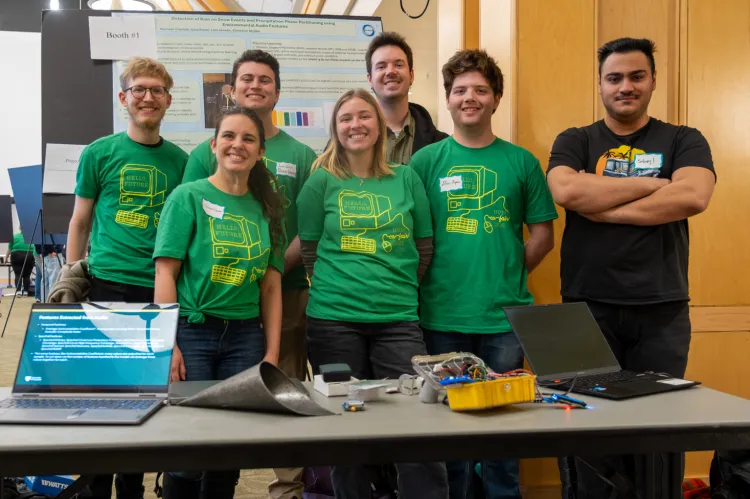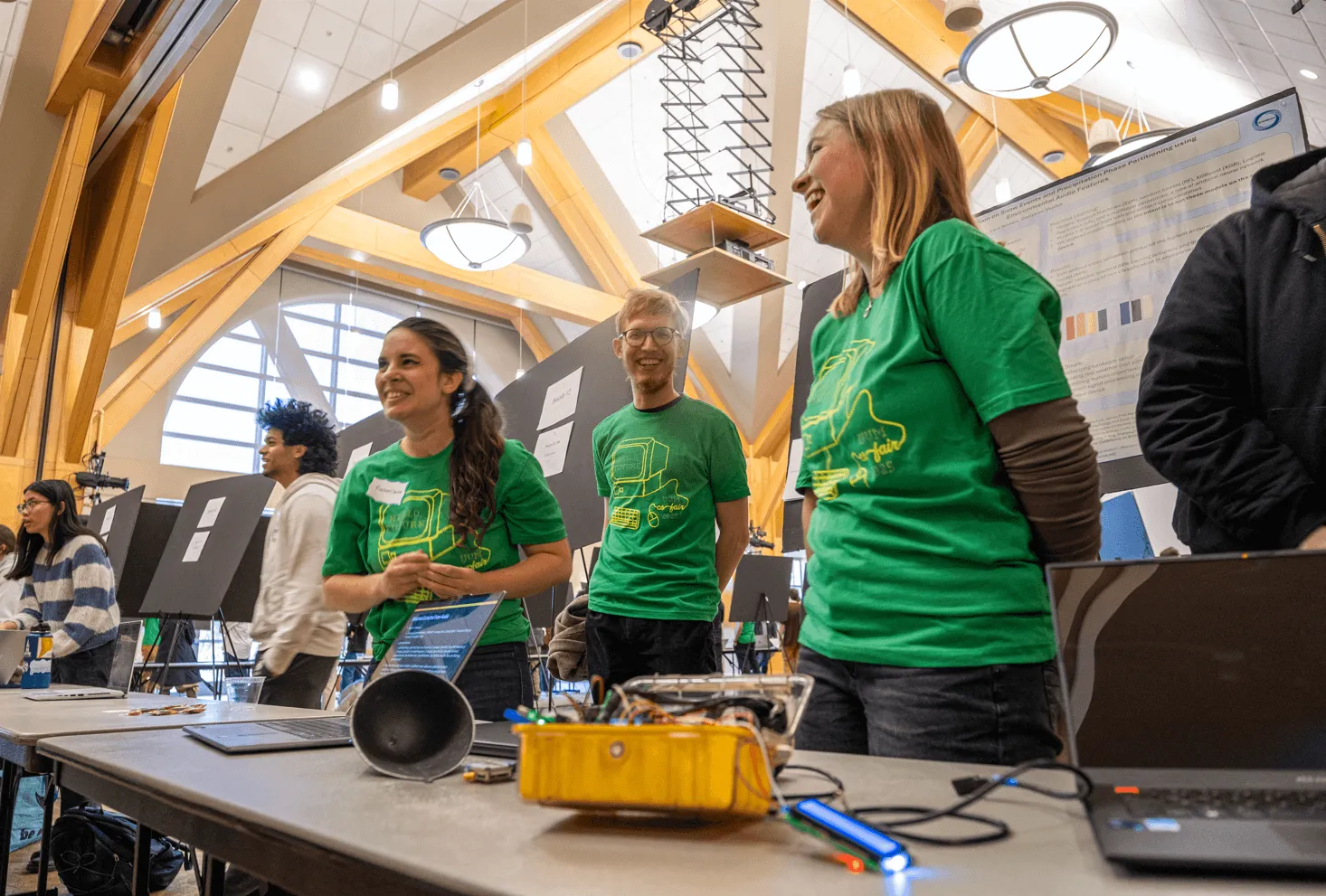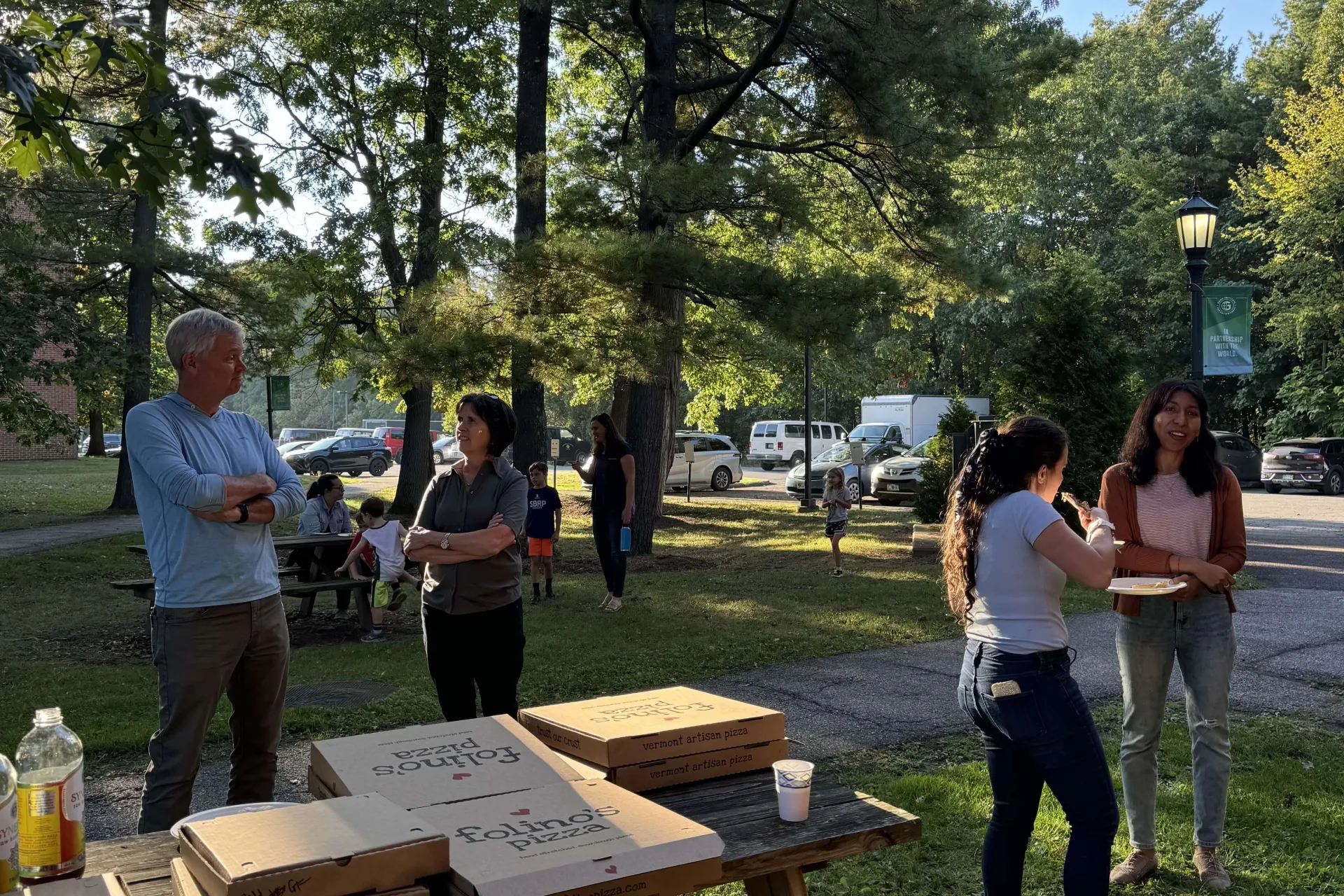At the UVM Computer Science (CS) Fair, the CIROH student team earned first place in the Machine Learning / Research category for their project, Low-Cost Precipitation Phase Partitioning Using Acoustic Data and Machine Learning in the Edge. This project focuses on detecting rain on snow events and precipitation phase partitioning. The team consists of Rachael Chertok (MS), Julia Sober (URA), Soheyl Faghir-Hagh (PhD), Jordan Bourdeau (URA), Scott Barrett (MS), Drew Jepsen (MS), Casey Forey (MS). The students are advised by Christian Skalka, Chair of the Department of Computer Science, with Tia Xia, a professor in the Department of Electrical and Biomedical Engineering, co-advising Faghir-Hagh.
CIROH, the Cooperative Institute for Research to Operations in Hydrology, is a national consortium committed to advancing water prediction and building community resilience to water-related challenges. The program brings together scientists from 28 different institutions across academia, government, and the private sector to improve the understanding of hydrologic processes, operational hydrologic forecasting techniques and workflows, community water modeling, translation of forecasts to actionable products, and use of water predictions in decision making.
The University of Vermont, through its Water Resources Institute (WRI), is one of the lead partners in CIROH. UVM faculty, postdocs, and students across various disciplines contribute to important watershed modeling and related research under CIROH. As the project lead on the FY ’23 awarded CIROH project, Advancing Snow Observation Systems to Improve Operational Streamflow Prediction Capabilities, Skalka secured funding for the student team’s research.
The goal of the project is to create a low-cost, low-power network of devices that can detect rain on snow events in near real time (NRT), providing valuable data for hydrological operations. Using machine learning, the team developed algorithms that classify precipitation types, differentiating rain, snow, hail, and silence from audio files. Signal processing extracts features from the audio signals, which are used as inputs for the models. Early results indicate high accuracy, providing a solid foundation for further refinement and fine-tuning. Ultimately, the project aims to integrate these models into embedded devices, allowing for real-time detection of precipitation phases and rain-on-snow events.
The CIROH team will also present their findings at the American Geophysical Union (AGU) conference in Washington, D.C., on December 11th, with Chertok as the presenting author.

Rachael Chertok, Julia Sober, Soheyl Faghir-Hagh, Jordan Bourdeau, Scott Barrett, Drew Jepsen, and Casey Forey won first place in theMachine Learning/Research Category. Photo provided by Chris Dissinger.


